A night at the Bowl could get pricier
October 21, 2010
Cultural bargain hunters, take heart: the cheap seats are still incredibly cheap at the Hollywood Bowl. But everything else is likely to go up a bit next season under proposed ticket price increases scheduled to go before the Board of Supervisors on Tuesday.
At the high end, the increases include a proposed $3 hike for Pool Circle and Garden Box tickets for special event performances (those would go from $282 to $285 a seat.) At the other end of the spectrum, Friday and Saturday Pop performance tickets in Sections V and X would increase from $10 to $11.
The $1 tickets for Sections V and X–the top 380 benches of the Bowl–would still cost only a buck on Tuesdays, Wednesdays and Thursdays. (The $8 seats in Section W also would remain unchanged on those days.)
“Where else in this city can you get anything for a dollar?” said Ed Tom, superintendent of operations at the Bowl. “We’re talking about live entertainment in the city of Los Angeles for $8-$10. What does it cost to see a movie these days?”
Tom said the fees are adjusted annually. This year’s increases are needed to keep up with “increased production, labor, marketing and artists’ costs,” according to the county’s Department of Parks and Recreation, which oversees the facility in conjunction with the Los Angeles Philharmonic.
Posted 10/21/10
Really cutting the fat in government
October 20, 2010
There was trouble lurking behind the scenes at the Compton Courthouse.
Doughnuts. Homemade banana bread. Deep fried cafeteria treats. And a healthy dose of rivalry to see who could do the best job of avoiding all that unhealthy stuff and the unwanted pounds that go with it.
Deputy Alternate Public Defender Connie Quinones and her self-named squad of Hub City Hotties knew the competition would be stiff when they set out to become L.A. County’s biggest losers.
“The clerks were really out to beat us,” Quinones recalled.
But armed with pedometers, brown bag lunches and the workout ethic necessary to conquer the 12-story courthouse’s stairs, the Hub City Hotties helped the Alternate Public Defender’s Office prevail in its long-shot bid to win the countywide contest.
Going up against much larger departments such as the Sheriff and Health Services, the tiny, 281-employee Alternate Public Defender’s Office (which takes on clients in cases where the Public Defender has a conflict of interest) fielded three teams. Together they lost 4.4% of their body weight and took top honors in the 8-week contest. The next best performance came from the coroner’s department (3.4% lost) and the Chief Executive Office (3.3%).
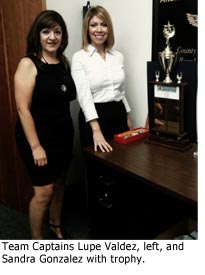 A total of 6,441 employees from virtually every county department took part, losing a total of 23,085 pounds—more than 11.5 tons. All the top teams were honored at the Board of Supervisors’ meeting Tuesday, but only one went home with the trophy.
A total of 6,441 employees from virtually every county department took part, losing a total of 23,085 pounds—more than 11.5 tons. All the top teams were honored at the Board of Supervisors’ meeting Tuesday, but only one went home with the trophy.
Quinones, an avid fan of “The Biggest Loser” TV show and regular user of superstar trainer Jillian Michael’s website, bought a new scale and set it up in her department’s conference room in Compton. Weigh-ins were serious business.
“There was no honor system,” said Quinones, a 19-year county veteran who lost 9 pounds during the two-month contest. “They had to have a witness when they weighed in.”
Those who gained a pound or ducked a weigh-in to hide their dietary missteps were fined $1 or $5 respectively. (Quinones used the proceeds to buy prizes she distributed randomly to team members.)
The Hotties encouraged and supported each other, brown bagging it in the conference room, exchanging ground turkey recipes and even meeting up on weekends for power walks at the beach or in Signal Hill.
Even so, success was not assured.
“I let a couple of court reporters and bailiffs join us and they gained!” Quinones said. “One gained 10 pounds!”
Fortunately, another one of the Alternate Public Defender’s teams, the eight-member Long Beach squad that dubbed itself Strong Beach, lost 7.5% of its body weight and helped put the entire department over the top.
That meant that Strong Beach captain Lupe Valdez got first dibs on bringing the trophy to Long Beach. It also will be displayed in Compton before coming downtown to central headquarters, where it will remain.
For now.
After the board ceremony, Valdez and Quinones treated themselves to a celebratory lunch of chilaquiles (definitely not on the Jillian Michaels eating plan) at El Tepeyac, east of downtown. There, they ran into some other county competitors who vowed: “Next year, we’re going to get that trophy from you.”
To which Valdez and Quinones replied: “OK, it’s on!”
Posted 10/20/10
Metro’s “Mad Men” riding high
October 20, 2010
Matt Raymond was an ad man on a mission when he set off for Metro headquarters in Los Angeles in 2002. Bound for a new job as the transportation authority’s incoming chief of communications, his first order of business was to find his new office at One Gateway Plaza. His second: “To make transit here cool.”
He didn’t fare so well on the first front. “You know how, when you get off the subway here, if you go one way you go to our building, and if you go the other way you go to Union Station?” Raymond confesses, chuckling. “Well, I went the wrong way.”
In his broader goal, however, everything seems to be headed down the right track. With a clear message and a talent pool that Don Draper himself would envy, Raymond’s in-house creative services department has spent the last eight years selling L.A. on mass transit the way gas-guzzlers have been pitched for generations by private ad agencies.
Under Raymond’s direction, Metro has been churning out the kind of prize-winning work usually associated with boutique ad firms. In the process, he and his team have reshaped the public image of the nation’s third-largest public transportation authority.
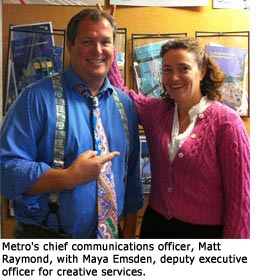 The creative services department, whose 13-person staff generates all the ads, maps, graphics, web/mobile data, merchandising and fleet design for Metro, has won more than 50 awards in the past five years for its rebranding efforts, including at least a half-dozen this year from such organizations as Harvard University’s John F. Kennedy School of Government and the Society of Environmental Graphic Design. Raymond was personally recognized this year for “dramatic improvements” in changing the perception of transit at the industry’s international Metros Awards.
The creative services department, whose 13-person staff generates all the ads, maps, graphics, web/mobile data, merchandising and fleet design for Metro, has won more than 50 awards in the past five years for its rebranding efforts, including at least a half-dozen this year from such organizations as Harvard University’s John F. Kennedy School of Government and the Society of Environmental Graphic Design. Raymond was personally recognized this year for “dramatic improvements” in changing the perception of transit at the industry’s international Metros Awards.
It’s a far cry from the mid-1990s, when the conventional wisdom about public transportation in Southern California was that it was useless and/or dysfunctional. After investing billions in L.A.’s first subway system, the agency’s finances had crumbled, and headlines routinely billed the MTA as profligate, quarrelsome and prone to engineering screw-ups.
The authority eventually improved, first under the leadership of corporate turnaround specialist Julian Burke and then under the recently retired Roger Snoble. But until Raymond was brought aboard in 2002, the agency’s image lagged.
“There was awareness of the agency,” he says, “but it didn’t have a very positive perception.”
Like Snoble, Raymond had come to Los Angeles from Dallas’ transit system, where marketing—not just to individual riders, but to businesses and community stakeholders—had been central to the mission. Advertising, he had learned, was not just billboards and commercials when it came to persuading a car culture to try mass transportation; everything from the look of the buses to the ease of the maps had to be part of the sales pitch.
For example: That wrong turn he made on his first day? Poor salesmanship, he decided.
“The first thing I did when I got the job was put better signage in all the stations,” he recalls.
More broadly, he believed that Metro needed a single, strong voice if the agency had any hope of getting through to car-centric Southern California. “Unbelievably, the agency didn’t have a central communications unit,” recalls Maya Emsden, Raymond’s deputy executive officer for creative services. “We had over 300 departments/programs, each with their own logo and each doing their own communications. The public didn’t even know some of them were part of the agency.”
Raymond corralled all those initiatives under a single communications department. Then Metro’s buses were repainted to drive home that friendly, consistent image—bright red for the rapid buses, “California Poppy” for the community locals, and silver for the express vehicles that travel the Orange Line’s dedicated busway. Then came a series of highly effective advertising campaigns that sold Metro as the simple solution to traffic, gas prices and other problems.
One award-winning campaign used simple pairs of black-and-white logos to depict Metro as, for example, the “hero” to the smoggy car “villain”, or the “sweet” solution to “bitter” gas prices. The ubiquitous images were on everything from bus benches to the t-shirts of baristas at L.A. cafes.
The creative services group—a closely-knit team that includes four graphic designers, one web designer and one signage designer—was transformed into Metro’s own mini advertising agency and print shop, saving the MTA huge sums on outside consultants. The group also taps local universities and art schools for talented interns, 10 to 15 of whom are on staff at any given time.
“Working with Metro has become a coveted job in these design schools, not only because we’ve been winning these awards, but also because of the pace and quantity of the work,” says Emsden. “Most internships, you work four months just to get a single brochure out. Here, we produce, like, two a week.”
Although the advertising has gotten the most attention, about 95% of the group’s time is spent on basic customer information that includes signage, literature, maps and such web features as Facebook, Twitter and Metro’s popular new blog, The Source. Coming soon: a new mobile app that tells customers when their next bus arrives.
Ethan Arpi, who is conducting a study of transit marketing for EMBARQ, the transit arm of the World Resources Institute, an environmental advocacy organization and think tank, says one key to Metro’s success has been its decision to give organizational stature to its communications chief.
“L.A. isn’t a transit-friendly market. It’s not just, ‘If you build it, they will come’, Arpi says. “If you build it, you have to sell it.”
Although it’s difficult to definitively assess the impact of Metro’s marketing efforts, transit advocates widely credit the communications group with persuading Southern Californians that the transit authority everyone loved to hate in the 1990s was actually a clean, hip, worldly alternative to their beloved cars.
According to public opinion and customer satisfaction surveys due for release by December, public approval of the authority has risen in the past eight years to a solid 64% this year from a lackluster 41% in 2002.
Some 98% of the public has heard of Metro, 79% are familiar with its system of buses and subways and 75% know about an actual service, such as a bus stop or rail line, near them, says Raymond. Also—and this is no mean feat, given the number of names the system has had over the decades—54% of the public now refers to the authority by just one name, “Metro” (as opposed to LACMTA or MTA).
Despite the encouraging numbers, some critics of the marketing strategy argue that Metro would do better to spend its money on improving its transit systems.
“I think they would better serve the public by making the system more accessible, rather than these ads that just say, ‘We have a bus and you can avoid traffic by taking it’,” says Nate Berg, a contributing editor at Planetizen.com, an urban planning news web site based in L.A.
“We know we have a bus. What we don’t know is where it goes, and when it’ll get there, and whether it will be there for them when they’re drunk in a bar at two in the morning.”
That said, however, Berg added: “I’ve got to say, they’re all over the place. And some of their ads are pretty good.”
Posted 10/20/10
Crunching L.A. County voter stats [updated]
October 19, 2010
Things change: The last time Los Angeles County went to the polls for a gubernatorial general election, Bernie Madoff was a respected investment advisor, no one had ever heard of an iPhone and Saddam Hussein was still alive.
Electorates change, too. Voter registration closed last week in California for the November 2 election, and the Los Angeles County Registrar-Recorder/County Clerk has now finalized the tally. The agency, in collaboration with the DMV and a number of city clerks and community organizations, had stayed open until midnight at more than a dozen locations to accommodate more than 17,000 last-minute registrations. As the updated chart below shows, more than a half-million new voters have registered in L.A. County since the 2006 election.
Democrats have the biggest share of new registrations, with the numbers of Republicans remaining largely flat. Also, note the growth in the “decline-to-state” category, which is consistent with national and statewide trends.
As for the 3rd Supervisorial District (and the other four), here are the most recent registration tallies, which soon will be updated. Scroll down to the Los Angeles County heading to see the preferences locally.
Posted 10/19/10
Subway 90210 needs more review
October 19, 2010
L.A. County Supervisor and Metro director Zev Yaroslavsky is asking for more work on a staff-recommended Westside Subway route that leaves open the possibility of tunneling under Beverly Hills High School.
Yaroslavsky, addressing strong community opposition to going under the high school and nearby homes, won support Wednesday from a Metro committee for a broad study of the concerns raised by the residents.
“It’s not a done deal,” Yaroslavsky said of the proposed tunnel—a statement that brought a measure of relief to Lisa Korbatov, vice president of the Beverly Hills Board of Education. “We’re thankful he understands our issues,” she said after Metro’s planning and programming committee approved the motion.
Korbatov, testifying on behalf of a contingent of riled Beverly Hills officials and residents, said the Metro staff report that includes the possibility of tunneling under the high school is full of “gaping holes and glaring omissions.”
The argument that seemed to get the most traction, however, was whether a tunnel under the school would undermine a $334 million bond measure passed in 2008 by Beverly Hills voters to modernize the campus.
Among other things, the school plan calls for three levels of subterranean parking, according to Korbatov and other speakers, who said the tunneling would make this impossible. They’re pressing for an alternative route down Santa Monica Boulevard, which also would require further analysis because it sits directly above a seismic fault.
Yaroslavsky, in proposing further study, said he did not believe the school garage plan and the subway tunnel were mutually exclusive. “I’m going to take a very hard and objective look at this,” he said. He suggested that the residents of Beverly Hills do the same: “I would encourage you to work with us and keep an open mind.”
Specifically, Yaroslavsky is asking the Metro staff to explore a variation on the so-called Constellation Station Option that would avoid going under the historic high school building. He also wants a full exploration of the potential risks of having a subway line and station under Santa Monica Boulevard, on top of a seismic fault.
At the heart of the controversy is a Metro staff recommendation for a 9-mile extension of the Purple Line, which would run from Western and Wilshire to the VA Hospital in Westwood. The staff report leaves open where the line’s Century City station should be located–including both the option that goes down Santa Monica Boulevard and the option that goes under Beverly Hills High School.
But many in the city are adamantly opposed to any alternative that includes the high school.
“Beverly Hills residents do not want tunneling when there’s a viable alternative,” Korbatov said.
The full Metro Board of Directors will consider Yaroslavsky’s motion at its October 28 meeting. That’s when the board also will take up the Metro staff’s recommendation for the subway’s “locally preferred alternative” route.
Whichever route the board adopts will receive intensive study during the project’s final environmental review process. It also will help place the Westside Subway project in line for federal funding consideration in fiscal 2012.
Building the subway, which has a $4.2 billion price tag under the staff-recommended route, will require federal dollars along with revenues from Measure R, the half-cent sales tax approved by voters in 2008.
Posted 10/20/10
Twinkling YOLA stars
October 15, 2010
Like its young participants, Youth Orchestra Los Angeles is growing. Check out the magic moment in this video (see below) when the kids at the organization’s latest outpost first receive their instruments.
YOLA’s newest program–the second of its kind–is jointly sponsored by Heart of Los Angeles and the L.A. Philharmonic and serves children in the Rampart District.
Read Zev’s blog on this innovative program, modeled on Venezuela’s legendary El Sistema, which produced Gustavo Dudamel (you may have heard of him.) And check out our other coverage here.

Posted 10/15/10
Sheriff hits milestone on rape kit tests
October 14, 2010
There was a time, not so long ago, when the Los Angeles County Sheriff’s Department seemed committed to resisting the inevitable, rebuffing advocates who wanted to know whether the agency was sitting on a backlog of untested rape kits.
It was mid-2008, after the Los Angeles Police Department disclosed it had more than 7,000 untested kits in storage behind Parker Center. The issue had entered the universe of politics, becoming a test of sorts of police responsiveness to the concerns of women.
But the Sheriff’s Department wouldn’t budge when a researcher for the group Human Rights Watch filed a series of Public Records Act requests for the information. The department stated that it would be “prohibitively time consuming” to count the kits—a response that Los Angeles County Supervisor Zev Yaroslavsky found unacceptable. At his urging, the five-member board directed the Sheriff’s Department to begin counting.
That was two years ago this month, a milestone that has now led to another. Not only have the kits been counted, all 4,763 of them have been outsourced for testing. Although they’re far from being fully processed—only about half so far have been found to contain usable DNA—sheriff’s officials and women’s advocates surprisingly are in agreement on this much: the process is going better than expected.
“I can remember a time when we couldn’t even get them to acknowledge there was a backlog,” said Sarah Tofte, the Human Rights Watch researcher whose records requests were rejected. “To be at a point now where they’ve sent out every kit, my gosh, that’s a big deal. I think it’s very definitely something to be celebrated, even if it’s not the end of the road.”
Tofte, who now works for actress Mariska Hargitay’s Joyful Heart Foundation, was the driving force behind Human Rights Watch’s 2009 report on untested rape kits in the Sheriff’s Department and LAPD, which also has now outsourced virtually its entire backlog.
There are many in law enforcement who privately argue that it’s unnecessary and wasteful to test every kit for DNA evidence, especially when the suspect’s identity is known or he’s been arrested. Under California law, a DNA sample is taken from all felony arrestees and entered into a database. Critics say that in these cases, there’s no need to test the kit because the suspect’s DNA already is in hand.
But advocates and others in the criminal justice system contend that there’s too much room for error in exempting certain types of kits, for which victims undergo a meticulous forensic examination. They say the broad discretion historically given detectives to determine whether kits are tested has resulted in botched opportunities, potentially leaving rapists on the loose.
Advocates note, for example, that the vast majority of rapes are perpetrated by acquaintances with a pattern of such behavior with other women. Although the suspect’s name may be known to police, if he’s not arrested, he won’t be swabbed under the California law. But the forensic evidence could connect him to other sexual assaults in which kits have been tested and uploaded into the Combined DNA Index System, or CODIS, database. This is what New York authorities found in processing its 15,000 warehoused kits.
In Los Angeles, however, the debate is now moot because Sheriff Lee Baca and LAPD Chief Charlie Beck both have directed that all rape kits—past and future—be tested.
The man responsible for executing Baca’s directive is Commander Earl Shields, who oversees the department’s crime lab operations. He says the huge mobilization has provided unexpected benefits to the department, beyond confronting the mass of untested sexual assault kits, as they’re called in law enforcement circles.
With new hires and equipment, Shields said, “we’ve built up a tremendous capacity in the lab. What that positions us to do in the future is to look at other investigative uses of DNA.”
Through an agreement between the Sheriff’s Department and the county’s Chief Executive Office, the lab has added six criminalists, with two more on the way thanks to a $1 million federal “Rape Kit Reduction Program” grant.
So far, the testing itself has cost $3.1 million—far less than the department initially predicted—according to the sheriff’s most recent monthly status report on the effort. Most of that money has come from a more concerted use of federal DNA grants. Only a fraction of the $2.3 million the department allocated from its budget has been tapped.
Shields said the sheriff achieved substantial savings by playing the private labs against each other. “We told them, ‘We have a whole lot of cases. The better the price, the more we’ll send. ’ ”
But there’s also been a downside. The crush of kits moving through the system has created a new backlog of nearly 1,000 kits awaiting “technical review” of the work done by the private labs, which are not allowed to upload the results into the DNA database. According to Shields, this verification process can vary greatly in complexity, possibly requiring even more investigative work by detectives.
Shields said he expects these cases to be reduced more quickly in the weeks ahead as the lab’s newly hired criminalists are trained. “Our ability to do technical reviews is increasing all the time,” he said.
As of October 1, according to the department’s status report, DNA from only 673 kits has been uploaded into the CODIS database. Of those, there have been 305 matches involving department cases, 227 of which are currently under investigation. Seventy-eight cases are closed, 17 of them resulting in criminal charges prior to the testing. So far, the department said two criminal filings are directly related to the testing. The District Attorney’s Office has rejected 38.
No one knows more about the importance of rape kits—or speaks more forcefully on the topic—than Gail Abarbanel, who 36 years ago founded the pioneering Rape Treatment Center at Santa Monica-UCLA Medical Center. There, she has created a safe environment for women traumatized by sexual assaults to receive, among other things, emergency medical care, forensic services and counseling.
“When it was discovered that thousands of kits were sitting in storage facilities and never opened or processed,” Abarbanel said, “it was really a metaphor for how rape victims are discounted in the criminal justice system.”
Abarbanel said she, too, is encouraged by the Sheriff’s Department’s progress.
“I commend them for sending kits to be tested, but none of these cases are completed until the results are in the hands of the detectives investigating the cases and the offenders who’ve been identified are arrested and off our streets,” Abarbanel said. “There’s still thousands of rape kits across the country that have not been processed. But what’s different in Los Angeles today is that we have an absolute commitment from the sheriff that every kit will be tested. I feel confident he’ll do the right thing.”
Metro’s favored Westside Subway route [updated]
October 14, 2010
Racing the clock to obtain federal funding commitments for the Westside Subway in the next fiscal year, Metropolitan Transportation Authority staff this week recommended what it considers to be the best, most cost-effective route for the project.
Under the “locally preferred alternative” favored by Metro, the Purple Line subway would be extended nine miles from the current station at Wilshire and Western to the VA Hospital in Westwood, at a cost of about $4.2 billion. Building the VA Hospital station, in addition to one at UCLA, would provide an important access point for the subway west of the 405 Freeway, the staff report said.
Metro’s Board of Directors will consider the recommendation at its meeting on October 28. Whichever route the board adopts will then undergo intensive study during the project’s final environmental review process. The board’s adoption of a preferred route also will move the project into competitive consideration for federal dollars in fiscal 2012. Those funds, along with revenues from Measure R, the half-cent sales tax approved by voters in 2008, will be needed to build the subway.
“We’re looking for federal dollars and the subway project is a really good candidate,” said Martha Welborne, Metro’s executive director of countywide planning. “We want to make sure we’re in the next cycle, or we’ll miss a whole funding year.”
In addition to the hoped-for “New Starts” funding, the federal government also is being asked to help accelerate the pace of building the subway under the 30/10 Initiative. Under that plan, local leaders are seeking to borrow against future Measure R revenues in order to fast-track an array of regional transportation projects. The aim is to complete the projects in 10 years, instead of 30.
The staff’s recommendation on the subway route came during the final stretch of a 45-day public comment period. But there’s still time to weigh in before the October 18 deadline. The electronic comment form is here.
The staff recommendation is one of five route alternatives—ranging in cost from about $4 billion to $8.7 billion—that were considered in the project’s Draft Environmental Impact Statement/Environmental Impact Report, issued in September. One of those would have added a series of subway stations in West Hollywood but Metro staff rejected that option, saying there is not enough funding to build the West Hollywood stops in addition to the Purple Line extension to the VA. That recommendation came as a disappointment to those in the community who had advocated strongly for the West Hollywood stations.
“There are a lot of disappointed people,” said Dan Wentzel, an actor/writer and transit advocate who writes a blog called The Pink Line. He said voters in West Hollywood had supported Measure R more than those in other cities, and have collectively responded to the subway plan by saying, “Build here! Build here!”
In Beverly Hills, however, many residents have expressed serious concerns about tunneling under homes and schools, particularly under Beverly Hills High School.
A full page ad in this week’s Beverly Hills Weekly, signed by more than 350 people and endorsed by numerous organizations, voiced support for a subway route under Santa Monica Boulevard and strongly opposed alternatives that would go under the high school.
A column in the newspaper quoted a Beverly Hills City Councilman, Barry Brucker, as calling Metro’s staff recommendation on the subway route a “slap in the face.”
In an interview, Brucker faulted the Metro report’s “glaring omission” of community concerns about tunneling under the high school–which he said is the primary issue about the subway in town.
“Not one word about the high school,” he said. “That led the whole community to believe this is all a whitewash and a fait accompli.”
The staff-recommended route would have seven stations, six of them along Wilshire Boulevard: La Brea, Fairfax (next to the Los Angeles County Museum of Art,) La Cienega, Rodeo Drive, Westwood/UCLA and the VA Hospital. The line also would extend into Century City for one station before rejoining Wilshire. The staff recommended leaving the exact placement of the Century City and Westwood stations open for further analysis during the final environmental review process.
The staff recommendations, contained in a report to Metro committees scheduled to meet next week, propose dropping a possible station at Crenshaw and Wilshire. Doing so would save $153 million and improve the project’s “cost-effectiveness index” (a measurement of cost per hour of “user benefit”) to $31.96, the staff report said. That would make the subway a better candidate for inclusion in the next phase of the Federal Transit Administration’s “New Starts” program, which favors projects with a cost-effectiveness index of $31 or less.
The staff also recommended against building a “connection structure” that would have served as a gateway for future heavy rail stations in West Hollywood. It suggested that other transit alternatives—such as a light rail subway—might end up being a more cost-effective option for West Hollywood, which would make the structure unnecessary.
Transit blogger Wentzel said he was encouraged by the report’s acknowledgment that a West Hollywood line “has very high potential as a transit corridor.”
“That’s the one silver lining,” Wentzel said, describing himself as a continuing subway backer and an optimist about bringing transit alternatives to West Hollywood. “It’s a miracle how far the Santa Monica Boulevard corridor has come.”
Posted 10/14/10
Updated 10/21/10: Metro’s Board of Directors will consider the Westside Subway project at their meeting at on Thursday, Oct. 28. For more information, including how to get there via public transportation, click here.
Some restaurant ABCs are MIA
October 13, 2010
As neighborhood cafes go, Julienne would seem to have it all—a charming setting in upscale San Marino with hordes of loyal patrons who throng the sidewalk waiting for a table at breakfast or lunch.
Julienne also has one of L.A. County’s most important food preparation status symbols: an “A” from the public health department. But you wouldn’t know it by looking in the café’s window.
Letter grades—displayed in restaurants and markets throughout Los Angeles County and soon to be posted on food trucks—are nowhere to be seen in San Marino. The same goes for Avalon, La Habra Heights, Sierra Madre and Signal Hill.
For Terrance Powell, those cities are the ones that got away.
Since the restaurant ordinance went into effect in 1998, Powell has been the public health department’s man on the front lines of getting municipalities within the county to adopt the law. Over the years, virtually every city with food-serving businesses has gotten onboard (with the exception of Pasadena, Long Beach and Vernon, which have their own health departments to inspect restaurants and don’t issue letter grades.)
That leaves the five holdouts, with about 160 eateries among them, including the lone food-serving establishment in La Habra Heights—the Hacienda Golf Club. Together, the five cities’ restaurants and markets represent a tiny fraction of the 40,097 establishments across the county that currently post letter grades.
Powell, a top official in the public health department’s environmental health division, said his persuasion initiative “simply stopped when we got to 99%.”
Restaurants in cities that haven’t adopted the ordinance still are required to be inspected by the county, and their grades are posted online. But no letter grades are displayed at the establishments—even if individual restaurateurs would like to do so—unless their city councils have adopted the county ordinance.
Explaining why San Marino hasn’t joined the crowd, Mayor Dennis Kneier said he’s not sure the measure is right for his city.
“Things are working fine the way they are,” Kneier said. He’s been on the council just 3 1/2 years, so he’s not sure why the county’s restaurant ordinance wasn’t adopted by his city in the early years.
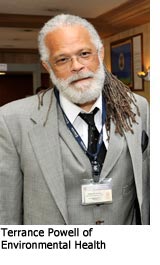 But his personal opinion is that the letter signs would be “another ugly distracting thing sitting in a window. To me, it’s no class.”
But his personal opinion is that the letter signs would be “another ugly distracting thing sitting in a window. To me, it’s no class.”
While he said he doesn’t have any strong opinions on the issue one way or the other, he said he was “not going to be a champion” of bringing the matter before the San Marino City Council.
“If it came before me,” he said, “I would give it due consideration.”
Some local officials seemed surprised to learn that their city’s eateries and markets are not among those posting grades.
“Oh gosh,” said Gary Jones, Signal Hill’s community development director. “In my mind’s eye, I’ve seen letters posted in Signal Hill. But have I really seen letters posted in Signal Hill? Maybe not.”
He said the current city council would likely be amenable to adopting the ordinance—along with the new one requiring letter grade posting for food trucks.
“I can’t imagine why they wouldn’t want to adopt it,” he said. “Everyone wants to know what they’re eating.”
Powell, a county veteran of 23 years, has done his share of presentations before local city councils—and expects to do more in the weeks and months ahead as outreach on the food truck posting ordinance begins.
He figures it’ll be an easier sell than when the restaurant ordinance first was introduced 12 years ago. He said there are several reasons for that: the program has proven to be extremely popular with the public, studies have found fewer reported hospitalizations for food-related illnesses since it took effect and surveys indicate that the posted grades are good for business (at least for the eateries that rank an “A.”)
But that wasn’t always the case. Beverly Hills lagged behind other cities in adopting the ordinance, as did Duarte. And South Pasadena initially adopted the ordinance but then decided to opt out; the city since has opted in again.
As for the remaining holdouts? They’re welcome to join in any time, Powell said. “It’s an open invitation. The evidence is now overwhelming.”
And if they don’t, he believes the eating public deserves an explanation.
“If the public doesn’t see a grade,” he said, “they should ask their city if they’ve adopted it, and if not, why not?”
Posted 10/13/10




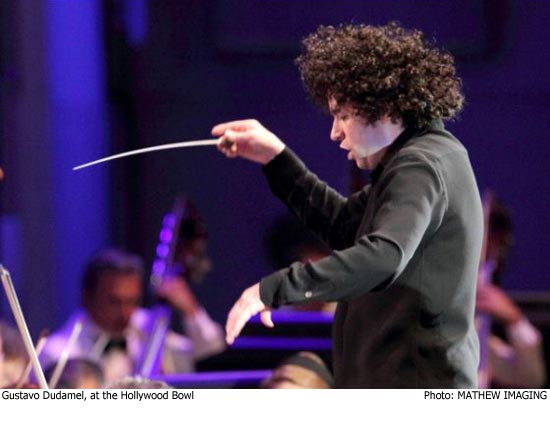

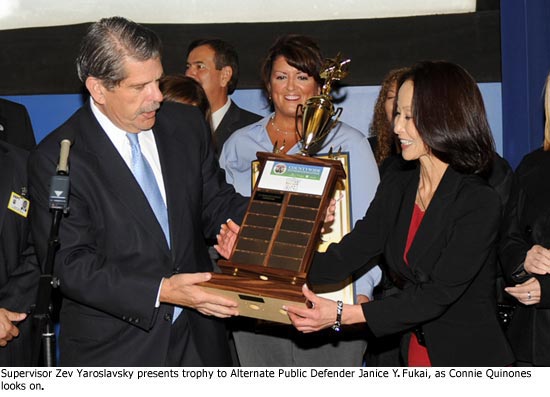
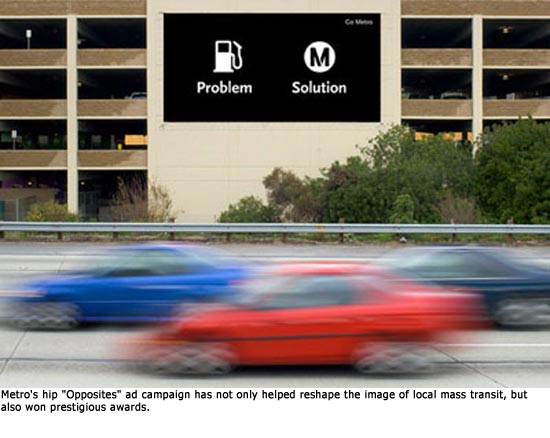

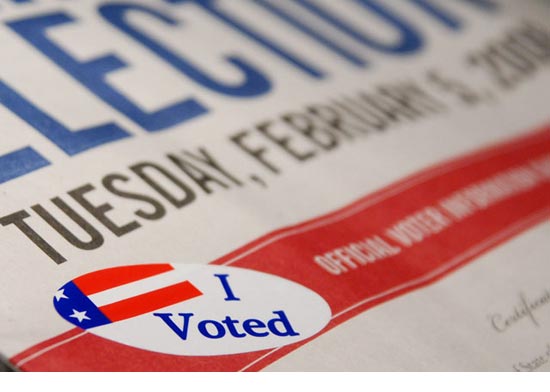
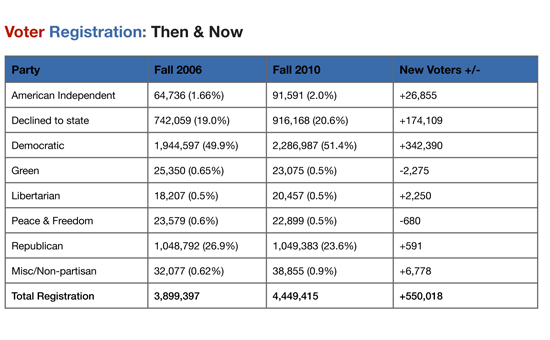
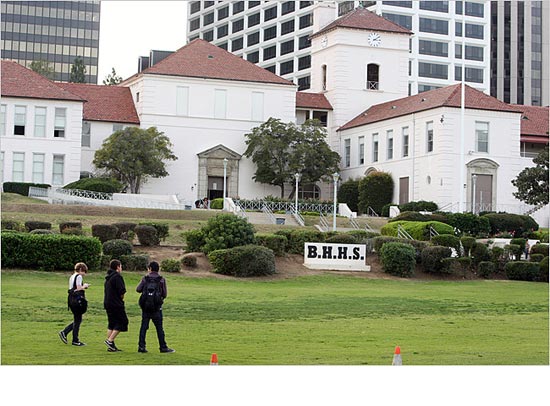

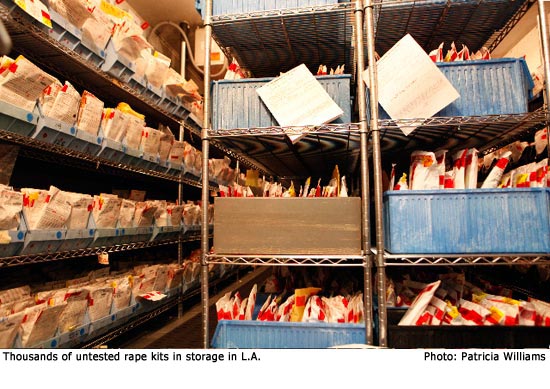
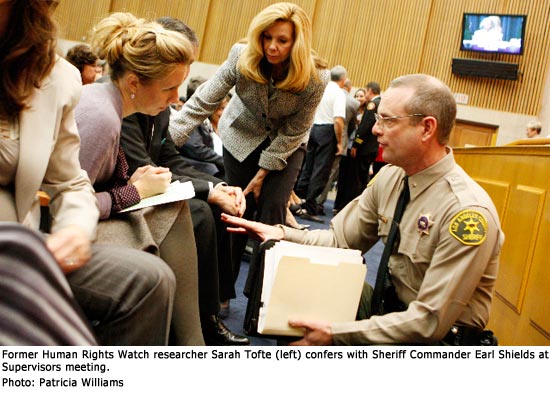
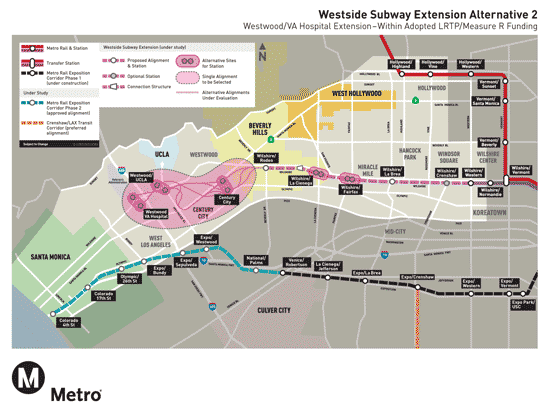
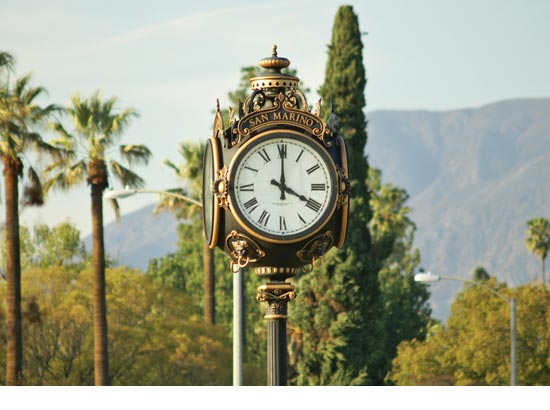





 Check for the latest closure information
Check for the latest closure information








